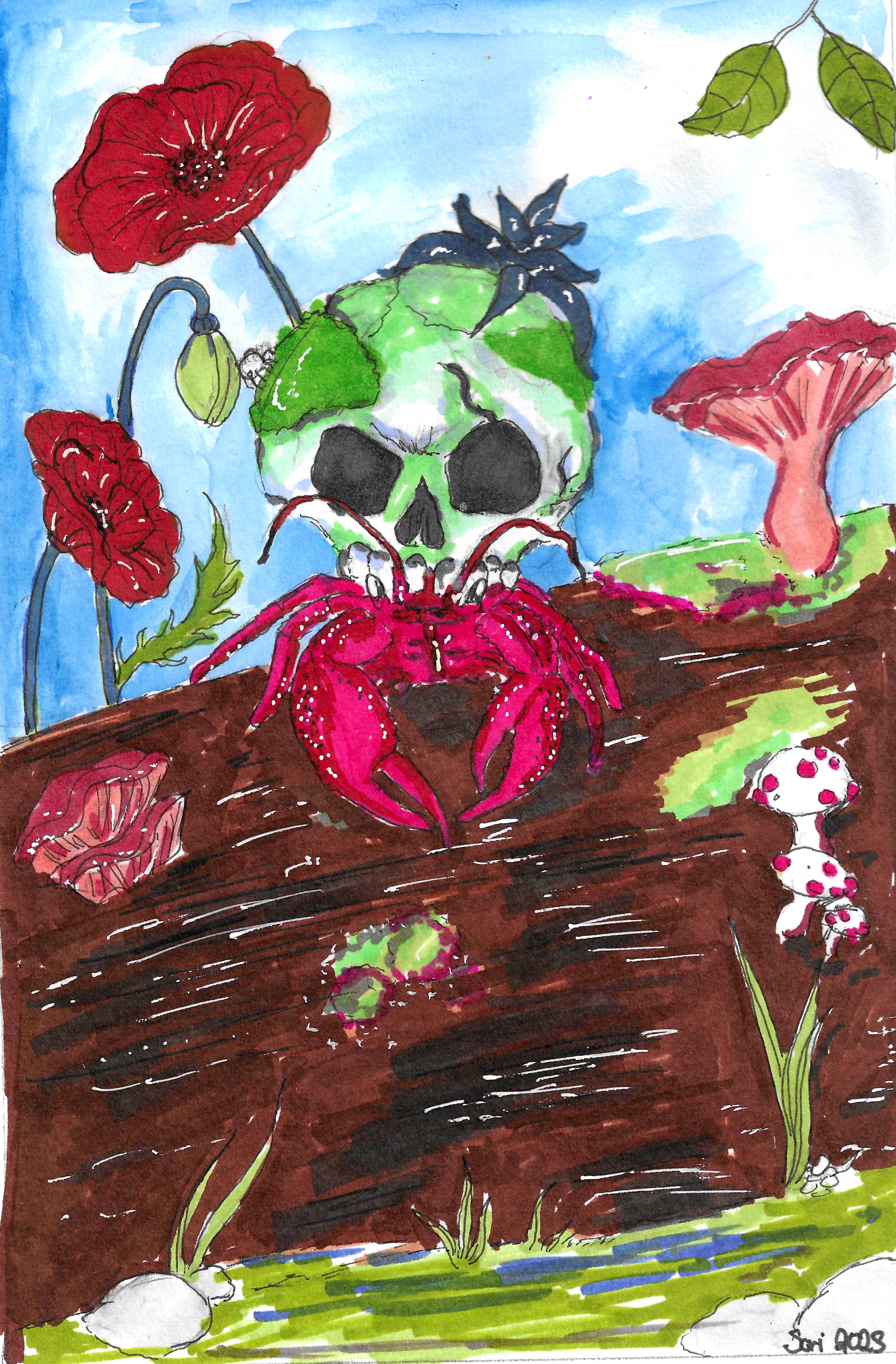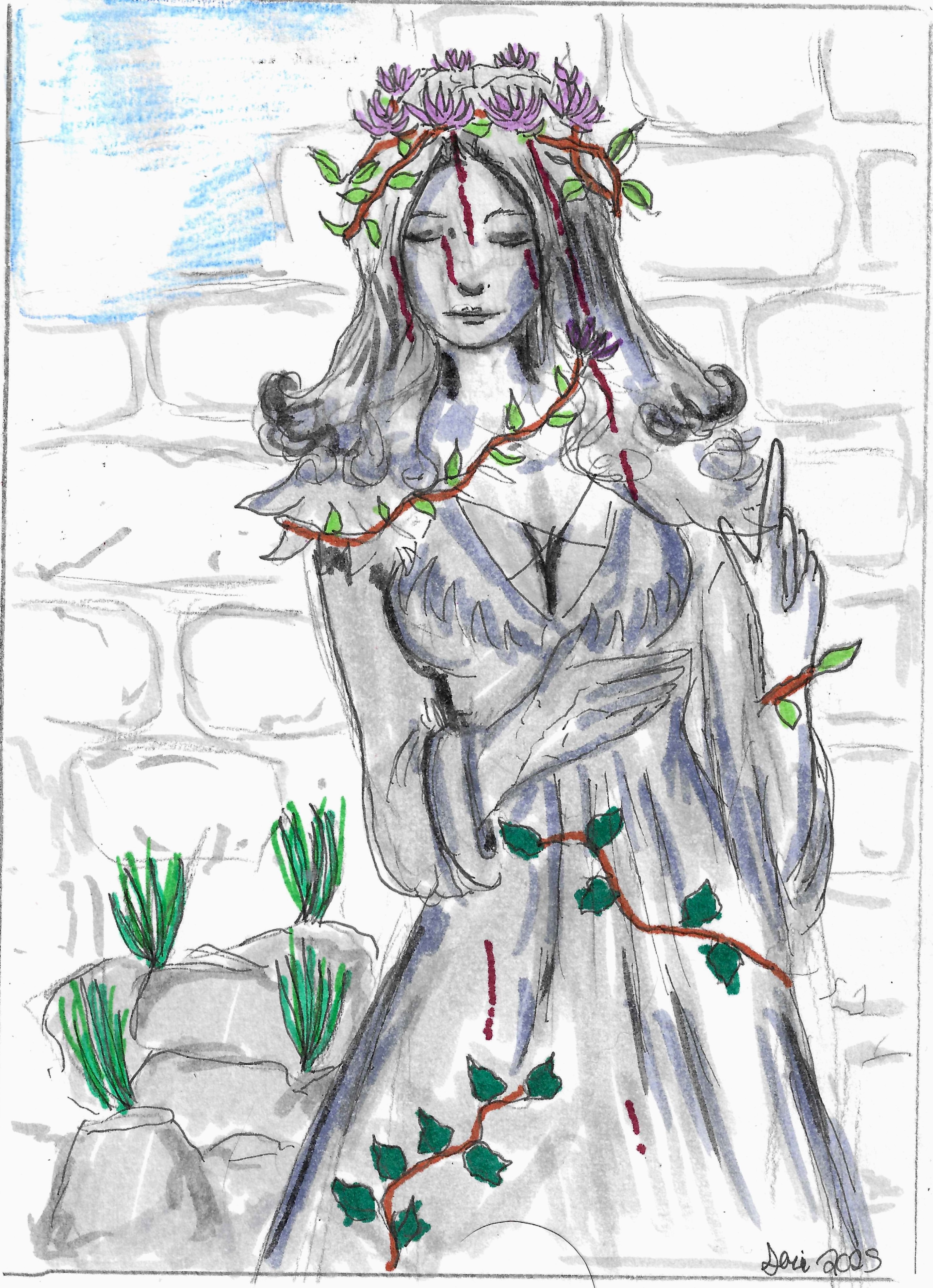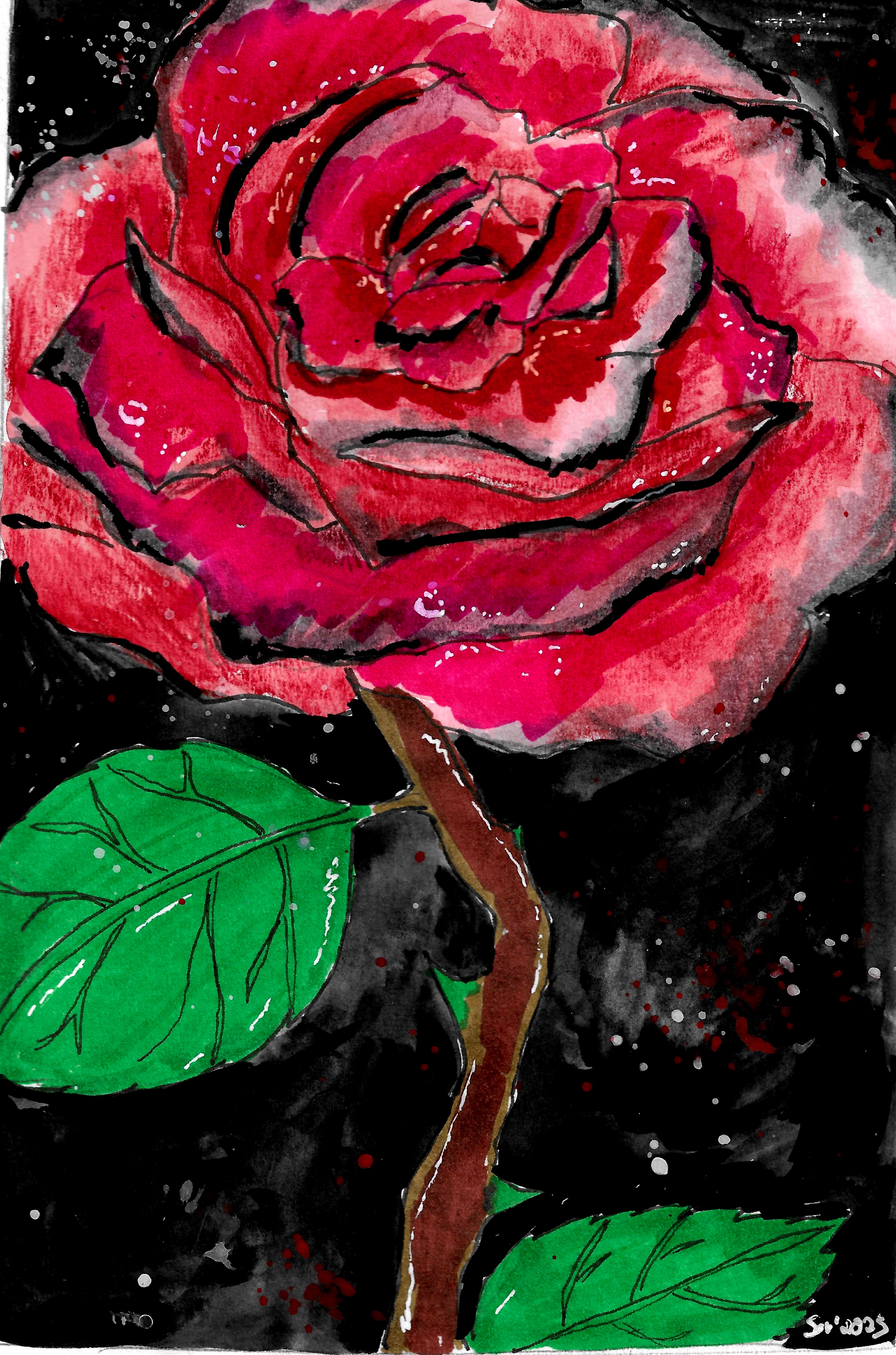My Sweet Little Flowers
The crumbling brick walls of the ancient ruins known simply as Nevaria Castle hide a secret few will ever discover. The air here is quietly perfumed with a strangely compelling blend of flowers and decay—rotting timbers giving rise to exquisite mushrooms. They stack atop one another like strange, fungal towers, releasing ethereal plumes of spores that catch the sunlight like dust motes in a cathedral. Their colors range from ghostly white to vivid red, with some bizarrely pink and hairy, thriving in the quiet rot. At first glance, the ruins seem utterly forgotten by time.
But look closer.
As moss and ivy creep across the broken stones, skull crabs skitter through the underbrush. A unique species of hermit, they inhabit the skulls of the long-dead. The bone shells are mottled with green oxidation and furred with lichen, while the crabs themselves—eerily stained in a deep, blood-red hue—scavenge silently along the stones. Only the subtle scraping of their hardened appendages gives them away, clicking softly as they crawl across timber and rock.
Deeper along the path, strange changes begin to reveal themselves.
The ruin's heart seems almost… cared for. Footpaths wind neatly through the undergrowth, paved with crushed, pale stone—though it’s best not to look too closely. Whispers say the stones are made from the bones of the dead, ground fine to line the walkways. Blood-red poppies bloom in framed beds, their near-black centers like staring eyes. Their colors are too vivid, too deliberate—nature guided by an unseen hand.
Other parts of Nevaria still bear the scars of war. Crumbling ballistae lie twisted and broken, half-swallowed by vines. Green tendrils choke splintered timbers until they collapse under the pressure. Arrows remain embedded in ancient walls, their shafts rotting—but still there. Sun catches off the black and white fletching Around them, jasmine clings to life with desperate grace, winding through the ivy that overtakes everything else.
Above, in the archways, hidden hollows in ancient bones sing when the wind passes through—an eerie, mournful sound that seems almost deliberate. Though Nevaria Castle is ancient and crumbling, this place is not forgotten. It is thriving, as if lovingly tended by an unseen hand.
The statues—once likenesses of the royals who lived here—are now draped in flowers. Vines and blossoms of various kinds have crept up their forms, carefully filling the cracks and crevices as though trying to heal what time has broken.
One statue in particular, believed to represent the mother goddess Ygharis, wears a macabre crown of blossoms. Spider-thorn flowers grow from her head, their curling petals exuding a blood-red nectar when pollinated by the native bees. She leaves crimson trails down her face that look like blood-stained tears, The effect is hauntingly regal, as if the goddess still reigns over this forsaken place.
Who tends this hidden garden, far from any living eye? Some say it's just one man—a solitary figure who discovered these ruins and made them his beautifully dark home.Many simply stay away from this place as well, Many stay away altogether. Others claim they hear singing on the wind…
Deeper still into the ruins, you stumble upon untouched pockets of pure beauty. Foxgloves and delphinium rise in trembling shades of violet and blue. Skulls rest in a solemn circle, each one cradling lilies and tulips that bloom in soft shadows of white and cream—as if nature itself mourns here, or perhaps marks the grave of someone once beloved.
Even the soil is strangely vital. Rake your fingers through the earth, and you'll find it teeming with life—large, fat earthworms writhing just beneath the surface, the land breathing quietly beneath your touch.
Still, there is something deeply unnatural about this garden. As if the darkness behind its macabre beauty is the true secret it hides. The flowers flourish in stunning arrays of color, but the deeper you go into the heart of the ruins, the more unsettling they become. They feel too beautiful to be real, too vivid to exist—colors you once thought were tricks of the eye now bloom openly before you.
Dinner-plate-sized roses, red as fresh blood and edged in black, stand in perfect rows. Peonies blush in soft pink, too reminiscent of a maiden’s flushed cheeks, their petals kissed by sunlight as bees and butterflies drift lazily above them. The dahlias bloom in deep fuchsia—the exact shade of lips worn by women who whisper secrets in shadowed corners. Not far beyond, fiery red cockscomb flicker like tongues of flame, bold and brazen.
Nestled into the heart of the garden lies a suit of armor, half-buried in ivy and jasmine. The pale white flowers have tangled through the bones within, winding around steel plates and curling through hollow ribs. Elven arrows pierce the warrior’s form—sleek, barbed things with strange feathering—and his head is tilted upward, frozen in the silent agony of his final breath. And yet, the armor remains oddly polished, gleaming faintly in the dappled light, as though this place is sacred… a resting ground never touched by time.
His sword is still gripped tight in bony fingers, the blade raised, pointed defiantly toward some long-forgotten enemy. He died standing guard—and here he remains, locked in vigil.
A brook babbles gently through the courtyard nearby, its waters clear and cold. Along its banks, water lilies bloom in strange hues of blue and pink, their petals glossy and too large, too perfect. Fat toads rest on the stones, their skin dappled in red and black like spilled ink. They sit like sentinels, unmoving, as though watching for intruders.
Beneath the lilies, bone fragments litter the streambed—ivory echoes of whatever ancient battle once soaked this earth in blood. Some are cracked, others worn smooth by time and current. The water runs over them like it remembers.water flows through a eye sockets a cracked skull down stream.
Eerie white marble benches line the winding paths, half-sunken in moss and vines. And then, faintly, you hear it.
A song.
Delicate, dissonant, echoing from somewhere deep within the garden’s heart.
A group of women—pale and silent—move among the flowers, tending them with an unsettling care. Their voices rise in a slow, lilting chant, older than the ruins themselves:
“My sweet little flowers, how you grow,
We tend with till and hoe.
Life and death,
You were born of each person’s last breath.”
Their song drifts through the air like pollen—soft, fragrant, and heavy with meaning. The garden lives, and it remembers.
It keeps its secrets well—though they lie in plain sight, hidden in blooms and shadow. Only one is said to truly rule this place. No one dares speak his name aloud.
He comes and goes as he pleases, bringing new flowers with him—some common, others so rare they seem born of dream or myth. Always cloaked in dark robes, his face remains unseen, even by the women who tend the garden under his watchful silence.
He spends most of his time in the garden’s heart.
There, nestled in a sun-dappled clearing, stands a single marble grave—a white stone marker that gleams amid the riot of color around it. It belongs to a woman who died long ago. He returns to her again and again, placing flowers at her resting place. Not just any blooms—but exquisite, unearthly ones the rest of the garden has never known. Some come from distant lands, others from places that might not exist at all.
No one is permitted near her grave.
It is sacred. Untouchable.
And the flowers he leaves there never wilt.
Some whisper that, on nights when Lunestra—the moon of sorrow—is full, the blooms begin to whisper. They murmur of his crimes, the sins he buried in petals and earth. Some of the oldest flowers have long since forgotten how to speak. Others remember everything.






Sounds so beautiful and unearthly and sad. Seems like a place to wander in silence.
Explore Etrea | WorldEmber 2025
It is a sad place and also dark place, it has ties tone of the world's antagonists.